I was engaged in a conversation recently about the methods used to catch trout on a fly, and I was particularly interested in how one angler — an accomplished long-rodder by all counts — espoused the virtues of keeping a low profile, using lighter tackle, small flies and miniscule tippets.
“That’s just how I catch fish,” he said, unapologetically. It’s likely, given the pressure put on public waters all across the U.S., that this angler had simply adapted to the angling he likes to do and settled on methods that worked for him, even if they may not work for the long-term benefit of the fish he pursues.
Certainly, we could agree that keeping a low profile while chasing big browns in a meandering spring creek is wise practice. I, too, like lighter rods when fishing in small water — it’s just easier to maneuver and shorter, more accurate casts are vital. And it’s clear we both share the same passion for fly fishing. For real, dedicated anglers, it’s a foundational element. Air. Food. Water. Fishing.
But, as time has passed and wisdom has slowly overtaken enthusiasm, I’ve come to realize that why we fly fish is a uniquely personal issue. The answer, I would suspect, is different for all of us. But how we fly fish? That’s something we must all be accountable for.
These days, if you fly fish for trout anywhere across the globe, you’re noticing some not-so-subtle changes. Spring snowmelt is often earlier than “normal,” and there’s usually less of it. Temperatures in even the cooler climes are warmer than what would be considered the usual. Water temperatures in the heat of summer are, on many of our beloved rivers, untenable for trout. Wildfires rage for months — in some trouty locations, the commonly recognized “fire season” can last all year long now, and the impacts of these blazes are significant to trout and their habitat. These environmental factors shouldn’t just be creeping into our angling morality — they should be breaking down our ethical double doors, grabbing us by our lapels and slapping us around.
More Like This
And we should be responding. We should be acting and volunteering and spending some of our money to help conservation groups fight the good fight both on the ground and on the Hill. But the first thing we should do is practice a little introspection.
Most of us spend an outsized percentage of our financial resources — whether it’s a tank of $3.75-per-gallon gas for a blue-collar angler to reach trout water an hour from home or several thousand dollars for well-heeled sports to jet off to New Zealand — to experience the thrill of pulling trout around by their lips. As much as we might like to think that fly fishing is a higher calling, reality is a bit more revealing, especially when we’re kneeling in the stream trying desperately to remove a fly from the jaws of a trophy rainbow, only to realize that, in our haste to answer our Godly passion, we forgot to crimp the barb.
So, yes … introspection. This is going to look quite a bit different to each of us. But let’s start with this simple statement: The gear angler who catches and keeps a pair of trout is doing less harm than the fly fisher who spends an entire day, doesn’t harvest a fish, but returns to the lodge and happily declare that he managed to catch and release 43 trout.
It’s fine if you disagree. I only ask that you think about it, particularly in a time when the climate instruments are spinning on the dashboard, the red warning light is flashing, the alarm is blaring and we’re this close to an ecological “mayday!” Throw in other factors such as the use of lighter tippets, the time spent holding fish out of the water in order to capture that perfect hero shot and even the use of dry-dropper or multi-fly rigs under indicators to increase the catch rates, and I dare say that a little kid fishing with a worm and taking a few trout home for dinner is the ecological do-gooder when stacked up against a high-volume fly fisher.
I’ve tried for years to tactfully explain to many fellow anglers how 6x or 7x tippets are hard on trout. They extend the fight, disable the ability to bring fish to hand within a reasonable time frame and simply exhaust the fish. This was a lesson I learned almost 20 years ago when Bruce Staples, a well-known fly fisher here in eastern Idaho, told a group of anglers at our annual fly fishing and tying expo that his limit, even for small-water trout, is 3x. Anything smaller, he explained, is irresponsible. And, he said, if you really love to fish, then you need to really love the fish, and that means giving them every chance of surviving their near-death experience with you.
On a crystal-clear spring creek, where lighter tippet is perceived to be a necessity in order to fool a big, fat brown that might weigh 4 pounds, every hooked fish is going to require more time to land, more time to revive and more time to recover, assuming the fish doesn’t break off and spend the next two weeks swimming around with a size 22 Zebra Midge stuck in its mouth. And, even under the very best of catch-and-release practices in increasingly rare ideal conditions (cold water, healthy habitat, proper fish handling, etc.), between 4 and 6 percent of the fish we do land and then set free are going to die. And I’ve fished with enough avid, seasoned, well-intentioned, dedicated catch-and-release anglers who just don’t know how to handle a trout worth a damn. Ideal catch-and-release practices happen very rarely.
I keep coming back to introspection, because it’s clear after discussions with my fellow anglers that a lot of us just don’t realize the impacts we have on our fisheries. There’s an assumption that catching and releasing trout is all we need to do to meet our ethical obligations (and cleanse our consciences in the process). Reality is a little different. Lee Wulff’s famous declaration that a trout is too valuable to catch only once still rings true. But I might take it a bit farther. On some days and under some circumstances, trout are just too valuable to catch at all, especially when adverse conditions might increase the likelihood of its demise if it falls for your fly.
How we fish matters. And that’s just not debatable.






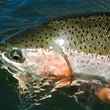

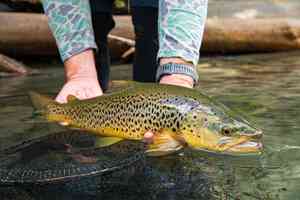


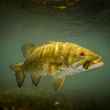
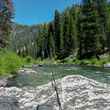


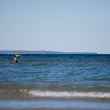



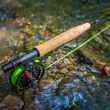




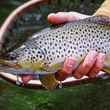
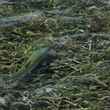
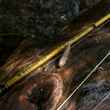
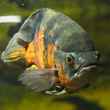
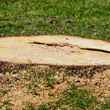
Comments
Toner Mitchell replied on Permalink
It's just not debatable.
Richard Marrs replied on Permalink
Thank you for this essay. As a 72 year old, fly fisher since age 16, I say, well and truely said.
anthony criscola replied on Permalink
The numbers guys need to ask why. Braggadocio?
Ryan replied on Permalink
It's also important to consider where fish. I'm always surprised that number of "conservation" video that show someone flying halfway around the world to then take a private helicopter to remote areas. Yes that would be awesome. Yes I am jealous. But it is probably not very sustainable.
Glenn Dotter replied on Permalink
Yes Ryan, you are right. These same conservationist that tell us how to fish, yet show us that they have the money to fly anywhere in the world to catch fish that they could catch within an hour or 2 from their home, show no regard for the impact they have on the climate they talk about so much. They think they can spew more carbon because they have the money to do so. Their double standard is pathetic. I have flyfished for ovet 60 yeats. I have lived off the grid for 25 years. My carbon footprint is far far less than these so called conservationists that want to tell me how I should fish. It is laughable.
Jeff Barnum replied on Permalink
Thoughtful article. Keep up the god work.
Rick B replied on Permalink
The reasons for pursuing the sport have been changed by marketing from gear companies and by guides and outfitters. I'm a DFO wade angler more than happy with a few great surface eats on the UD system. A few good eats its a hard sell for a $500 drift boat trip. The relentless pressure from all angles by better equipped and better skilled anglers is taking a toll on the trout. Changes in location an feeding behaviors are upping the challenge which is fine by me but has to be tough on the guides. Lots of used drift boats available soon at a river near you.
Mike Lundrigan replied on Permalink
I live in a place where the fishing pressure is not great and trout often are born and die without ever having seen a human! I do not believe barbs have to be pinched because with them I can play the trout harder and get them in quicker! Using fluorocarbon, I almost never fish lighter than 6 pound test, which also allows me to fight the fish harder without being overly concerned the tippet will break!
I do not lift trout I wish to release out of the net in the water! I use haemostats to grab the fly and with a simple twist remove it! I do not touch the fish with my hands if I am not intending to keep them for the pan! I am not greedy and limit my catch to no more than enough for a fresh meal! I rarely use flys smaller than # 16 Wide gap, all of which I have been tying for 50+ years! I have been fly fishing this way for at least 45 years! Fishing barbless makes you fight the fish more gently and prolongs the fight, IMO! I do not think this is better for the trout in the long run! You are free to disagree but those are my
opinions and I am sticking to em!
John replied on Permalink
I'm with you all the way but you may want to reconsider the barbless statement. hookset begins with a hole equal to the diameter of the hook and ends up much larger. A barbless hook therefore requires constant tension to avoid the long distance release, a barbed hook is much less likely to free itself. So I don't understand- how you play a fish has anything to do with Barb/barbless. Besides, I like how the fly usually falls out on its own when netted and how you usually don't need hemostats to remove a barbless fly.
AP Wesner replied on Permalink
I fish 6x tippet on smaller flies and can lean on a big trout easily. New 6x isn’t what it used to be. The stuff is strong! How you play a fish whether its on 6x or 2x is more important than tippet strength. If the fish gets a tail flick and a burst of steam then you’re on the reel and the fish will get tired regardless of tippet size. Lean on them quickly and early. Don’t be afraid to break one off every now and then. I also think there should be a catch and release limit (hard to enforce). If you can keep two fish out of a river then maybe the catch and release limit should be 8 or 10. This might reduce the flotilla of bobber draggers being “guided” on a river and make those same anglers more intentional with their techniques and targets.
John replied on Permalink
Your essay is spot on, from my first fish at age 5 to present day of 68, I have run the gamete of every infraction- morally and legal, and I now prefer a great fish story to a photo, even if it is embellished over a beer. How to educate the newbies, and provide continuing education for the "experienced" is the best we can do.
The recent fish and game photo on their website titled "winter fishing" sends the wrong message to the uninformed- belly squishing and out of the water.
James Snow replied on Permalink
I must say that you have enlightened me. I felt that using light gear was okay because I would never play a fish to exhaustion, he would break me off because I would try to force him to hand. I had not considered the fly that would be left in his mouth. 3x from now on. Thank you for a truly informative piece.
Rod replied on Permalink
They are an invasive species where I live so I'm not too worried about being too "hard" on them
Jim Dawson replied on Permalink
6x, #22s, wet hands, etc. are the modern trout fishing equivalent of what chumming with corn, fishing treble hooks with cheese, or using M80s used to be. All effective methods that needed to be reconsidered given the impact they have on fisheries. Thank goodness we are past bait or explosives. I say let’s give the fish a break. Fish for fewer, but do it at a higher quality.
Markus Fipps replied on Permalink
Lol. Your comment equals. My casting and presentation skills suck and I'm a euro snagged.
Pages